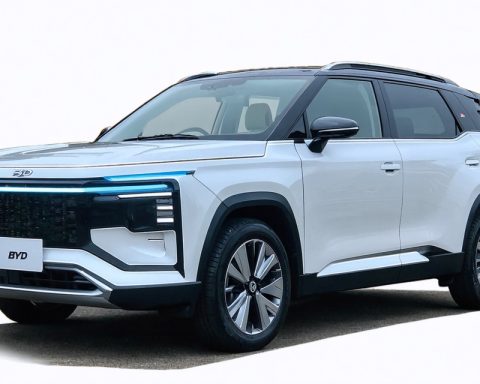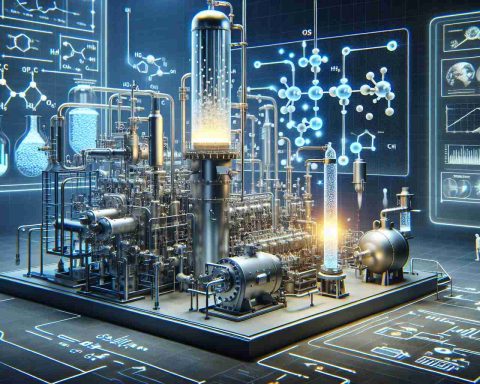- The Winz Maru has made a breakthrough in sustainable energy by producing and delivering green hydrogen from the ocean to Tokyo Bay, marking a significant achievement in maritime innovation.
- Part of the Wind Hunter Project, this vessel uses wind power for propulsion and offshore hydrogen generation, emphasizing zero emissions.
- Mitsui O.S.K. Lines (MOL) converts hydrogen into methylcyclohexane (MCH), an efficient method for storage and transport, aiming to produce 100 Nm³ of hydrogen by FY2025.
- A larger demonstration vessel is planned for the 2030s, with aspirations for full commercialisation of the hydrogen value chain.
- The project will be showcased at Expo 2025 in Osaka, representing the potential of clean energy integration into global supply chains.
A new era of maritime innovation has dawned on the wind-swept expanses of Tokyo Bay, where the futuristic sail of the Winz Maru glides through shimmering waters. This ambitious vessel, helmed by Mitsui O.S.K. Lines (MOL), has accomplished a pioneering feat—the production and delivery of green hydrogen straight from the depths of the ocean to the heart of the metropolis. It marks a significant stride in sustainable energy, with the first onshore hydrogen supply taking place at Tokyo’s central breakwater area.
Transcending its traditional role as a demonstration yacht, the Winz Maru embodies the cutting-edge Wind Hunter Project. This zero-emission initiative harnesses the power of the wind to propel vessels while simultaneously generating hydrogen offshore. The project’s journey commenced in the serene waters of Omura Bay, near Sasebo City, where over two fiscal years, the Winz Maru meticulously honed the art of hydrogen extraction and storage onboard.
MOL’s visionary pursuit extends beyond simply generating clean energy. In a symphony of innovation, they have managed to streamline hydrogen transport by converting it into methylcyclohexane (MCH). This transformation is no small feat, efficiently allowing the storage and handling of this potent energy source. Propelled by newly installed turbine generators, the Winz Maru is primed to produce approximately 100 Nm³ of hydrogen by FY2025, ready to fuel a myriad of applications, including providing power to trailer homes and nearby facilities.
As their emerald sails catch the wind, MOL’s eyes are set on a larger demonstration vessel—an embodiment of their grand vision for the Wind Hunter Project poised for the 2030s. Their aspiration is not mere production but the commercialisation of a seamless hydrogen value chain.
To witness the unfolding of this sea-bound dream, enthusiasts can look forward to Expo 2025 in Osaka, Kansai, Japan. Here, a model of the Winz Maru will stand proud, a testament to a future where clean energy courses through global supply chains as effortlessly as the breeze.
The message is clear—MOL’s endeavor is more than a technological triumph; it is a clarion call for industries worldwide to embrace sustainable practices with open arms. As we peer into a horizon where ships not only navigate oceans but also humanely harvest them for energy, we are reminded of the immense possibilities that sustainable innovation harbors. The world waits, breath held, for these greenly paved paths of maritime exploration to unfold.
The Future of Maritime Innovation: How the ‘Winz Maru’ Sets New Standards for Sustainability
Introduction
The groundbreaking achievements of Mitsui O.S.K. Lines (MOL) with their Winz Maru vessel represent a monumental leap in sustainable maritime technology. As it navigates Tokyo Bay, this revolutionary project exemplifies the potential of harnessing wind energy to advance clean hydrogen production and delivery. This transformative approach not only signifies progress in sustainable energy but also illuminates possibilities for broader commercial applications in the future.
How the ‘Winz Maru’ Harnesses Wind to Generate Hydrogen
Innovative Technology:
– The Winz Maru utilizes cutting-edge wind propulsion systems, combining the elegance of sail-powered movement with turbine generators to produce renewable energy in the form of hydrogen gas.
– This hydrogen is then transformed into methylcyclohexane (MCH), a stable and energy-dense form, which simplifies storage and transportation, vital for practical use cases.
Practical Applications:
– By FY2025, the vessel aims to generate approximately 100 Nm³ of hydrogen to power diverse applications. These include supplying energy to trailer homes and local facilities, setting a precedent for decentralized energy solutions akin to MOL’s vision.
Real-World Use Cases and Industry Trends
Expanding Hydrogen Supply Chains:
– The advent of the Winz Maru paves the way for a new era in maritime shipping, promising a shift towards zero-emission fleets that could significantly reduce the carbon footprint of global trade.
– With MOL’s plan to introduce a larger demonstration vessel in the 2030s, the company showcases a commitment to developing a comprehensive hydrogen value chain, potentially influencing global maritime and energy industries.
Market Forecast:
– The global green hydrogen market is expected to reach USD 300 billion by 2030, driven by initiatives such as MOL’s Wind Hunter Project, emphasizing the importance of sustainable energy advancements (source: Allied Market Research).
Reviews and Comparisons
Technological Advantages:
– Unlike traditional fossil fuel ships, the Winz Maru achieves zero-emission operations by fully utilizing renewable wind energy sources. This positions it favorably against conventional vessels in terms of environmental impact.
Challenges and Limitations:
– The technology and infrastructure for hydrogen conversion and storage must evolve to meet scalability requirements and ensure seamless integration into existing maritime logistics frameworks.
Controversies and Limitations
Industry Skepticism:
– Some industry experts question the economic viability of producing and storing hydrogen at sea, particularly given the initial costs of deploying such advanced technologies.
Logistical Constraints:
– The integration of hydrogen fuel systems into current maritime protocols necessitates substantial investment and policy support, which could delay widespread adoption.
Actionable Recommendations and Quick Tips
For Industry Leaders:
– Invest in R&D to further reduce production costs and improve the efficiency of wind-to-hydrogen conversion technologies.
– Collaborate with government bodies and environmental organizations to establish supportive regulatory frameworks and incentives for renewable maritime initiatives.
For Enthusiasts and Stakeholders:
– Attend industry exhibitions and forums such as Expo 2025 in Osaka to stay abreast of the latest advancements and network with industry leaders.
For Policy Makers:
– Prioritize funding for clean energy research and support policies that facilitate the transition to sustainable maritime logistics and green hydrogen solutions.
Conclusion
The Winz Maru embodies a crucial step towards redefining how we leverage renewable energy sources in maritime and industrial sectors. By promoting an integrated hydrogen value chain, MOL’s bold innovation provides a blueprint for other industries to follow, signaling a promising shift towards a sustainable future. As technologies continue to advance, partnerships and innovations like the Wind Hunter Project are set to chart new courses for a cleaner, greener world.

















